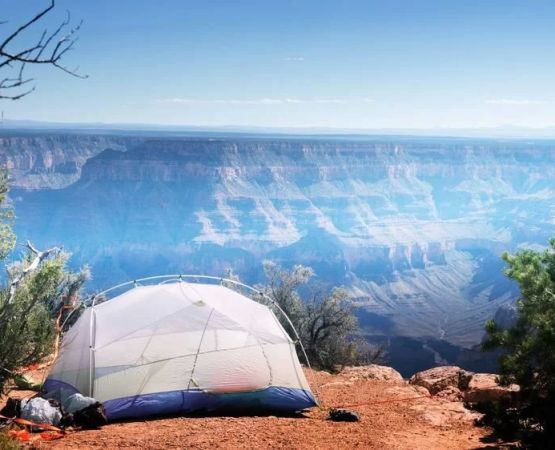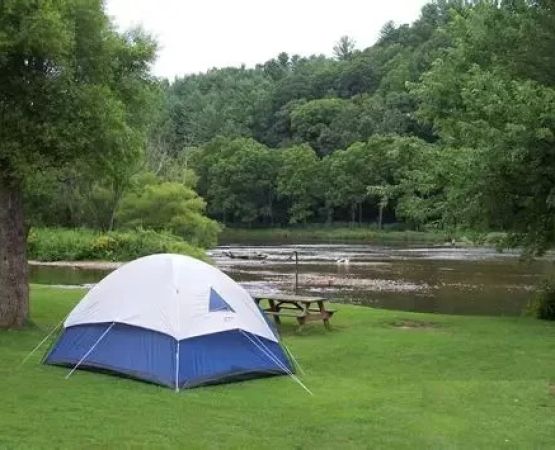How to Create a Comfortable Sleeping Setup While Camping
Learn how to create a comfortable sleeping setup while camping with expert tips on gear, mattress choices, and tricks for better sleep under the stars.
Creating the Perfect Sleeping Setup for Camping
When you're out in the wilderness, nothing feels quite as rewarding as a comfortable night of sleep after a day of hiking and exploration. Whether you’re a seasoned camper or just starting, having the right sleeping setup can make a world of difference. In this article, I'll share my tips and tricks for creating a comfortable sleeping arrangement while camping, ensuring that you get the rest you need to enjoy the next day's adventures.
1. The Importance of a Good Sleeping Pad or Mattress
When it comes to camping, one of the most important aspects of your sleeping setup is a good sleeping pad or air mattress. The ground can be hard and uncomfortable, and a poor night's sleep can ruin the entire camping experience. I’ve learned the hard way that a thin foam pad isn’t enough for a good night’s rest.
Here’s why a good sleeping pad or mattress is crucial:
Insulation from the Ground: The ground can be cold, even in summer. A good sleeping pad helps insulate your body from the chill, making sure you stay warm through the night.
Comfort: A thicker pad or mattress provides cushioning for your back and joints, reducing pressure points and making it easier to sleep soundly.
Durability: You want a mattress that’s durable enough to handle rocky or uneven terrain without getting punctured. High-quality air mattresses with puncture-resistant fabrics are a great investment.
2. Choosing the Right Sleeping Bag for Your Conditions
Choosing the right sleeping bag is another critical factor. There are so many options available, and it can be overwhelming to choose the best one for your needs. A sleeping bag that’s too light won't keep you warm at night, while one that’s too heavy may leave you uncomfortable during warmer nights.
Consider the following when selecting your sleeping bag:
Temperature Rating: Make sure to pick a sleeping bag that suits the temperature conditions you'll encounter. For summer camping, look for bags with a higher temperature rating, while winter camping requires a sleeping bag rated for colder temperatures.
Sleeping Bag Type: You can choose between a mummy bag, which is tighter around the head and feet for maximum warmth, or a rectangular sleeping bag for more space to move around. Mummy bags are great for colder weather, while rectangular ones are more comfortable for warmer temperatures.
3. Bring a Pillow for Neck Support
It might seem like a small detail, but bringing a pillow is a game-changer. After a long day of hiking, the last thing you want is to wake up with a stiff neck. While you can make do with a stuff sack filled with clothes, it’s worth investing in a lightweight camping pillow for neck support.
Camping pillows come in various types:
Inflatable Pillows: These are lightweight, compact, and adjustable, allowing you to inflate them to your preferred firmness.
Compression Pillows: These are made of soft foam and often have a built-in cover, offering a plush sleeping experience. They’re bulkier than inflatable pillows, but they provide excellent support.
4. Use a Tarp or Tent Floor Protector
A good sleeping pad or mattress is important, but so is protecting it from moisture and dirt. In areas where the ground is damp, moisture can seep into your sleeping pad and make for an uncomfortable, cold night. To prevent this, always use a tarp or tent floor protector underneath your sleeping pad.
This will also help keep dirt and rocks from puncturing your mattress. A tarp is lightweight, easy to pack, and serves as an excellent safeguard against the elements.
5. Create a Cozy Sleeping Area in Your Tent
The inside of your tent should feel like your cozy home away from home. This can make a significant difference, especially if you're camping for several days. Here’s how you can make your sleeping area more comfortable:
Elevate Your Sleeping Pad: Use a sleeping pad or air mattress with sufficient cushioning to raise your body off the cold, hard ground.
Organize Your Gear: Avoid cluttering your tent with unnecessary gear. Keep essentials within arm's reach, but organize other items outside or in a vestibule to keep your sleeping area spacious and inviting.
Add a Blanket or Throw: Bring a lightweight blanket or throw for additional warmth and comfort. It’s a great way to personalize your sleeping space and add a little extra comfort.
6. Pay Attention to Ventilation
Proper ventilation inside your tent is essential for both comfort and safety. Without it, condensation can build up inside your tent, making it damp and uncomfortable. You don’t want to wake up with a wet sleeping bag! To improve airflow:
Open the Tent Vents: Most modern tents come with built-in vents. Open them to allow air to circulate inside your tent.
Use a Tent Fan: If you’re camping in hot weather, a small battery-powered fan can help keep the air moving and make it easier to sleep in your tent.
Conclusion
With the right gear and setup, you can transform your camping experience into a comfortable, restful retreat. By investing in quality sleeping pads, choosing the right sleeping bag, and ensuring your tent has proper ventilation, you can sleep soundly and wake up ready for the next adventure.
If you’re a beginner, remember that it’s not just about the gear—it’s also about preparation. Test your setup before your trip to make sure everything works and feels comfortable. Your ideal camping setup will help you create lasting memories in the great outdoors.






